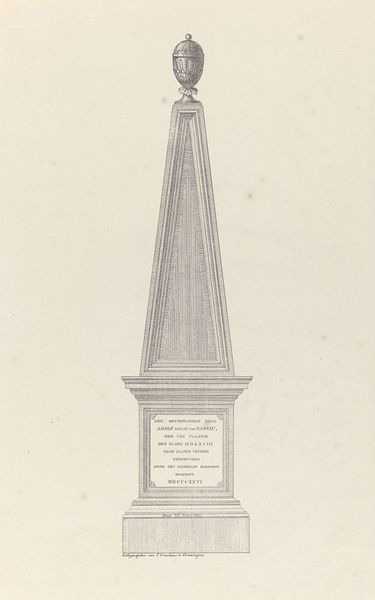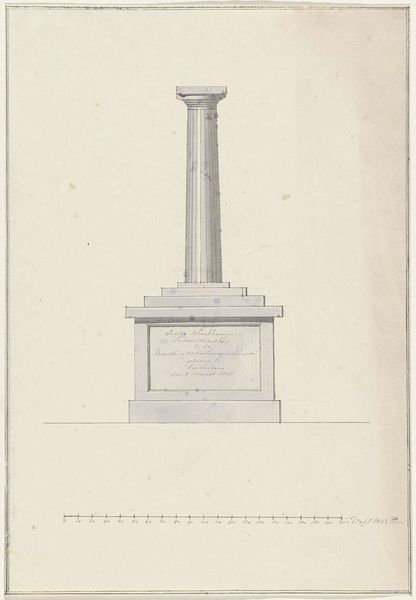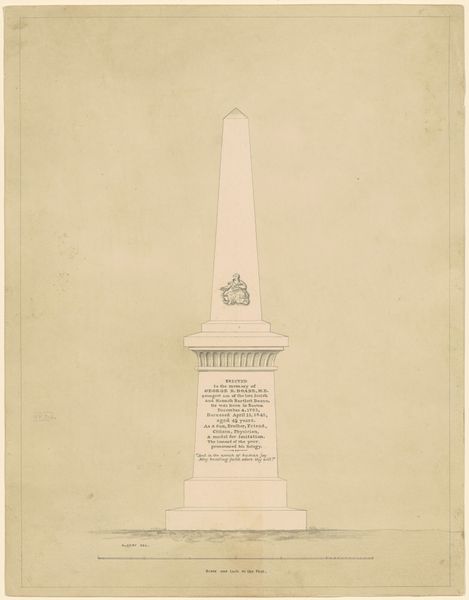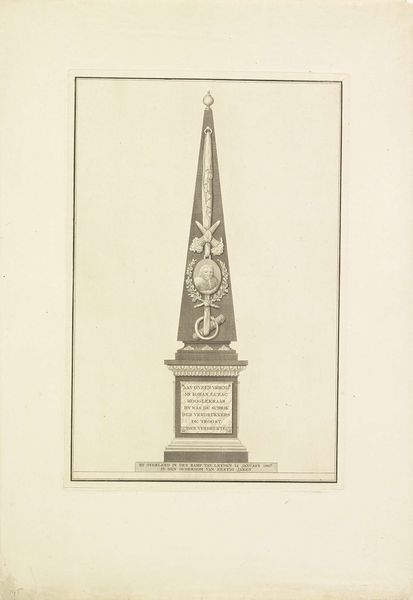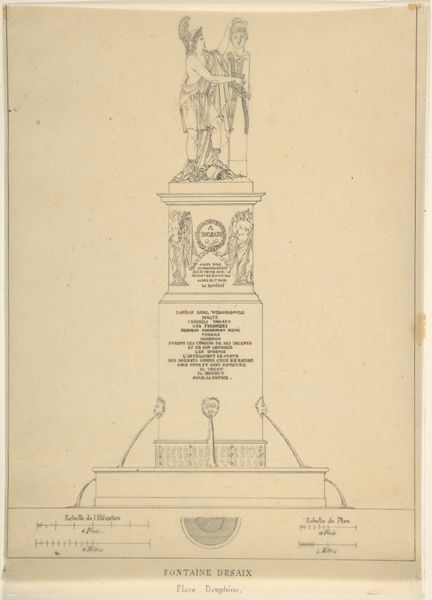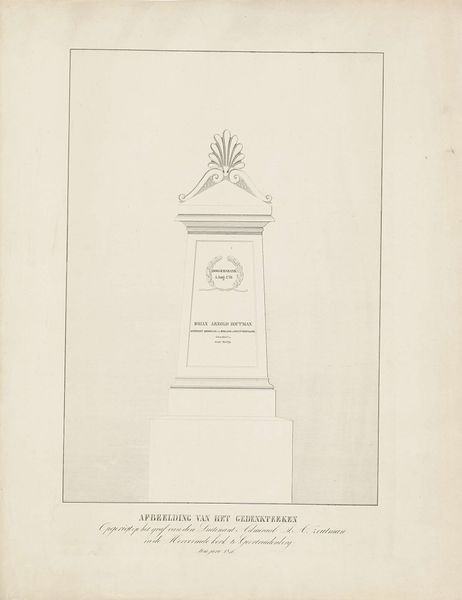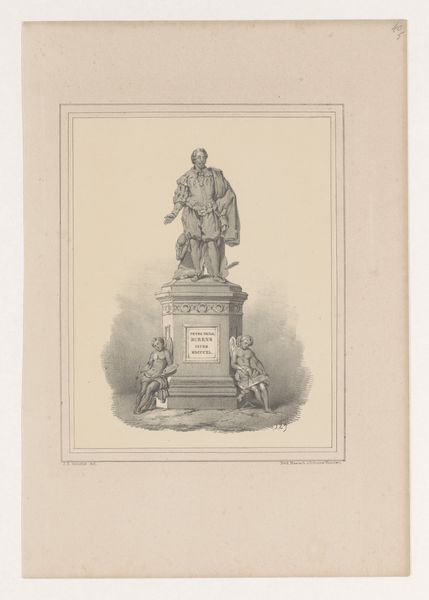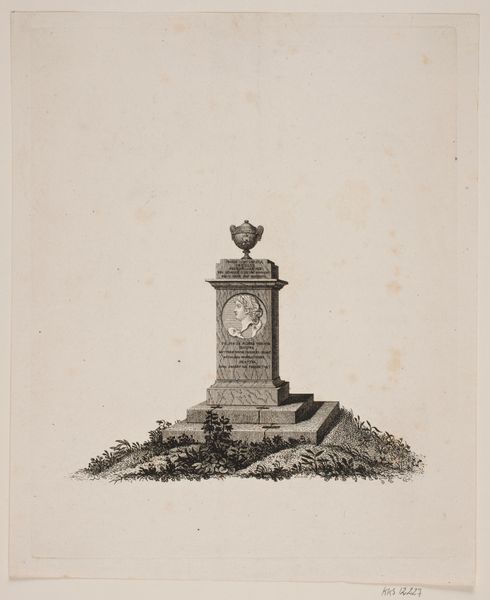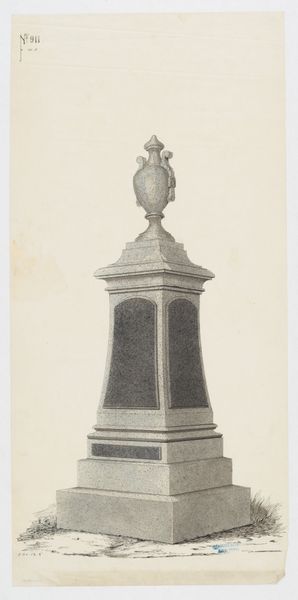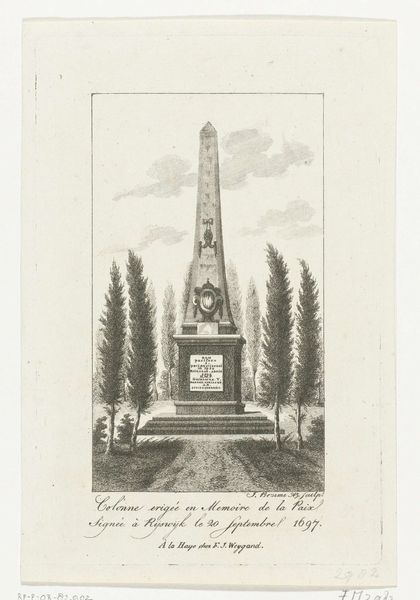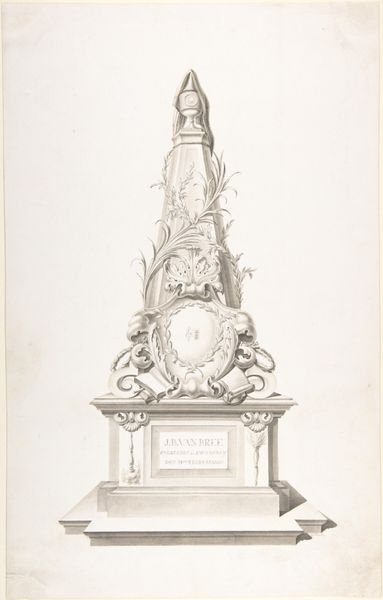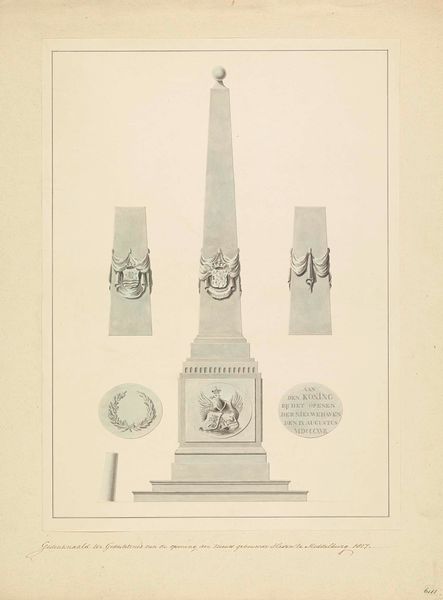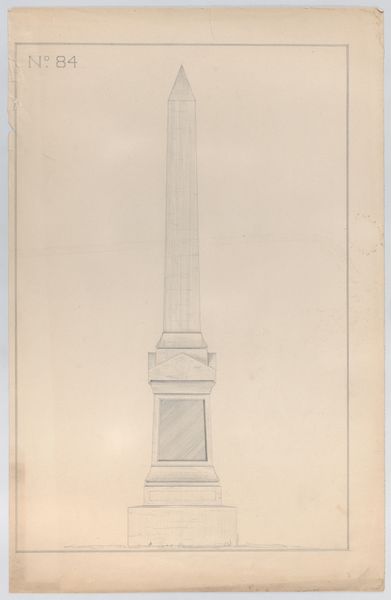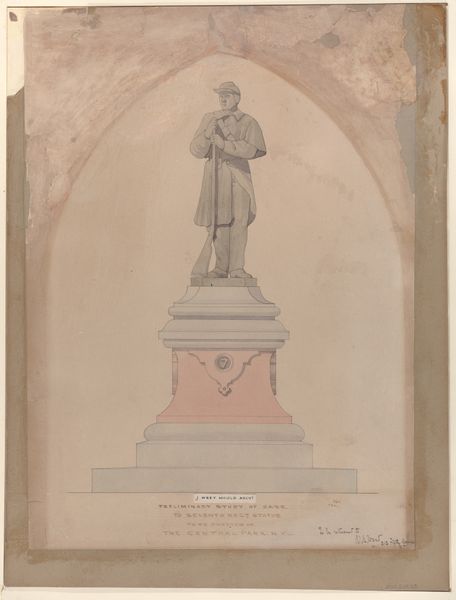
Het monument voor Adolf graaf van Nassau, gesneuveld tijdens de slag bij Heiligerlee, opgericht in 1826 1826 - 1829
0:00
0:00
print, sculpture, engraving, architecture
#
neoclacissism
#
statue
# print
#
landscape
#
geometric
#
sculpture
#
line
#
history-painting
#
engraving
#
architecture
Dimensions: height 405 mm, width 259 mm
Copyright: Rijks Museum: Open Domain
Jan Oomkens made this print of ‘The monument to Adolf Count of Nassau, killed during the battle of Heiligerlee, erected in 1826,’ sometime in the 19th century. Oomkens lived through the tumult of revolution and empire and here memorializes an event from the Eighty Years' War. The monument commemorates Adolf of Nassau, who died in 1568 leading Dutch rebels against the Spanish. Adolf's death became a symbol of Dutch resistance and national identity. Erecting this monument was a statement of Dutch pride and independence following French occupation. Consider how public monuments reflect a nation's values and historical narrative, choosing which figures and events to celebrate, therefore shaping collective memory and identity. How do you think memorializing war relates to contemporary conversations about history? Monuments like this prompt us to reflect on who we choose to remember and why.
Comments
No comments
Be the first to comment and join the conversation on the ultimate creative platform.
